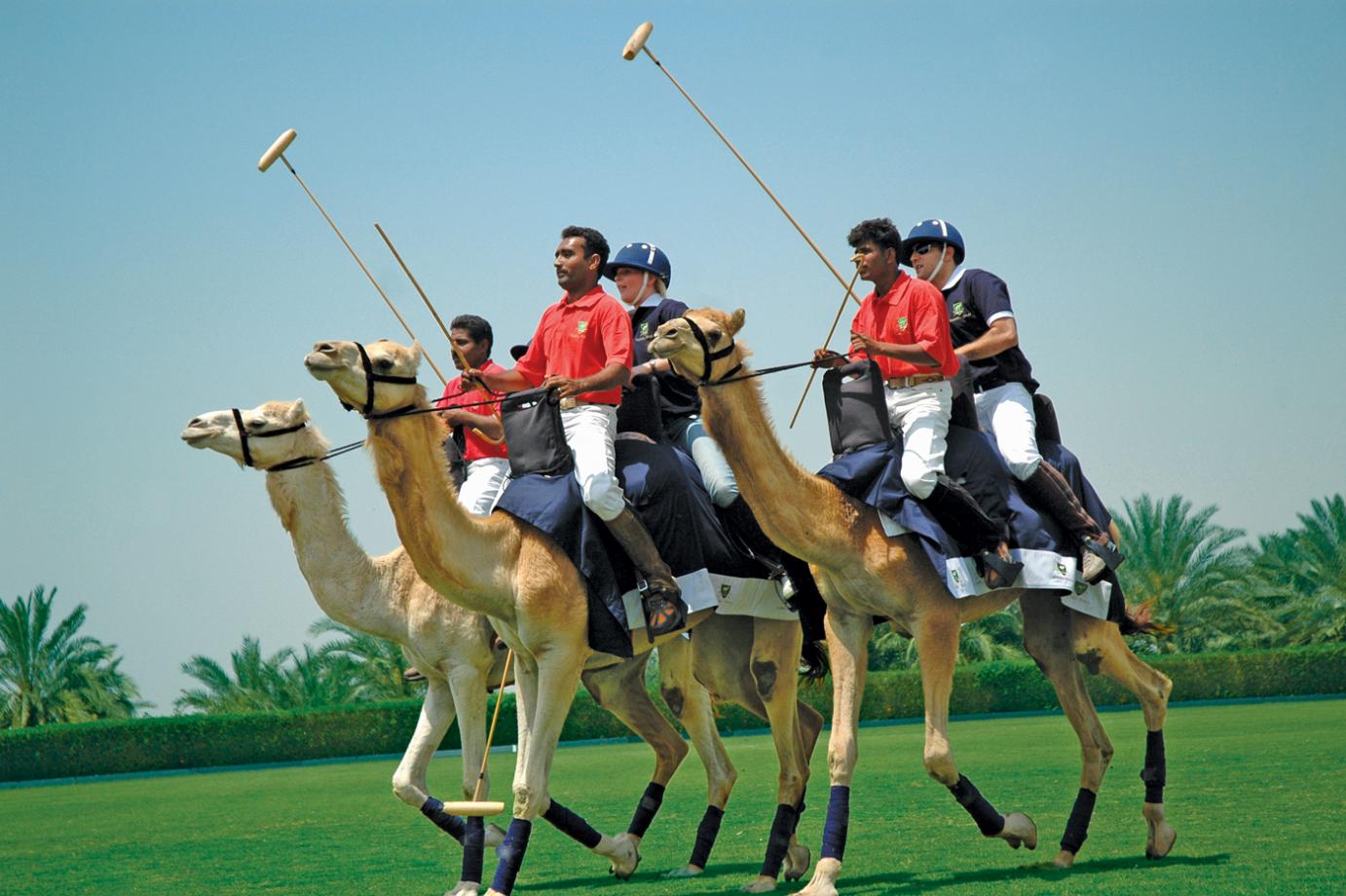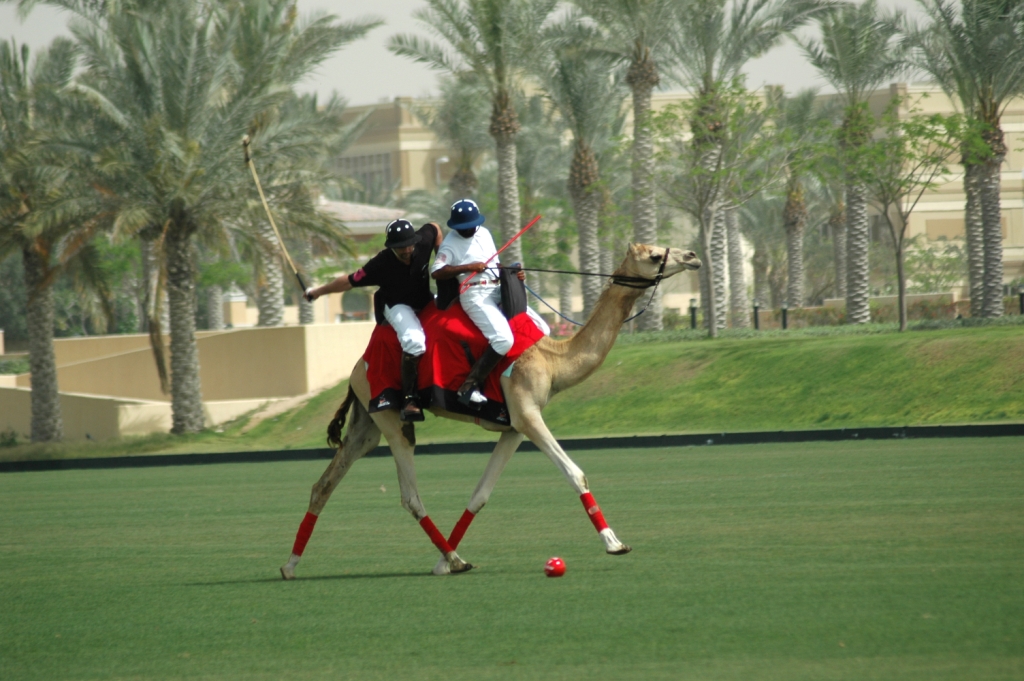No extra skills needed!
Have you ever tried to play Camel Polo? If not, perhaps the time has arrived for you to muster all your courage, clamber onto the chosen Camel’s furry back and see what happens. Organisers of this entertaining pastime declare that no prior equestrian or camel riding experience is required and that this activity is nothing but great fun for virtually everyone. Those who have made the acquaintance of camels before may find them cute or even cuddly, despite their size and their sometimes intimidating grunt issued from the base of their huge lungs. They are tender giants, really. Depending on the outcome of an encounter – and with all due respect – some rate camels (who can close their nostrils) smelly and stubborn – and they slobber. In general, the camel, a mammal, is pleasant to have – but one never knows what it’s up to next. They can be such clowns, camels! Even the classy racing variety – costing as much as a fleet of Rolls’s and trained to keep their aristocratic countenance at all times – could not care less about conventions if caught in a foul mood. Crowds cheering on grandstands have watched priceless camels stop dead in their speedy strides and abruptly turn on all four heels, only to continue their lonely run in the opposite direction, protruding lips flapping. Much to the chagrin of the helpless jockey…

Wielding the mallet
Interaction with a Camel
Polo camels are different! They do exactly as told and generously render club-wielding greenhorns the impression of actually be playing Polo. But before, there’s training, which consists of learning the proper swing of the mallet (not club!) – so it does not get entangled with the camel’s spindly legs or land someone a blow on the conk by mistake. Exercising the technique of how to hit the ball properly also plays a significant role in the briefing! Plus there’s tuition on riding and steering a camel successfully. Ready to battle it out “on the hump” in the final chukka? Regulations are similar as in horseback Polo, although this version may include a few surprises. At the end of the match, there is an awards ceremony and a refreshing beverage of choice waiting for participants and spectators.
The game
Each camel will have one participant sitting in front of the hump to steer, whilst his or her team-mate is perched behind the hump and hits the ball (if all goes well) – which is the size of a football, for better results and to avoid collective disgruntlement. Each camel is accompanied by a trainer on foot holding a lead rein – for assistance only. He is not allowed to interfere with the play – so: no cheating here!

Camel Polo in Dubai
The timing
Early morning or late afternoon, weather and season permitting.
The duration
Between 1 to 3 hours depending on the number of players, the time of year and day.This is the fairest for camels and participants alike!
The capacity
Min. 8, max. 60 participants
The venues
The event can be held at either the Dubai Polo and Equestrian Club or at the Desert Palm.
With one, two or three humps: the Camel
Excerpt from Wikipedia, the free encyclopedia: The camel is a hoofed mammal. “A camel is an even-toed ungulate within the genus Camelus, bearing distinctive fatty deposits known as ‘humps’ on its back. The three surviving species of camel are the dromedary, or one-humped camel (C. Dromedarius), which inhabits the Middle East and the Horn of Africa; and the bactrian, two-humped camel (C. Bactrianus), which inhabits Central Asia – and there is the three-humped camel (C. Humpthree!). All species have been domesticated; they provide milk, meat, hair for textiles or goods such as felted pouches, and are working animals with tasks ranging from human transport to bearing loads. ‘Camel’ is also used more broadly to describe any of the six camel-like mammals in the family Camelidae: the two true camels – the dromedary and bactrian, and the four South American camelids: the llama and alpaca are called New World camels, while the guanaco and vicuna are called South American camels.” http://en.wikipedia.org/wiki/Camel
The human camel is found worldwide. Photos: ©Gulf Ventures, header photo: ©Christina Feyerke
